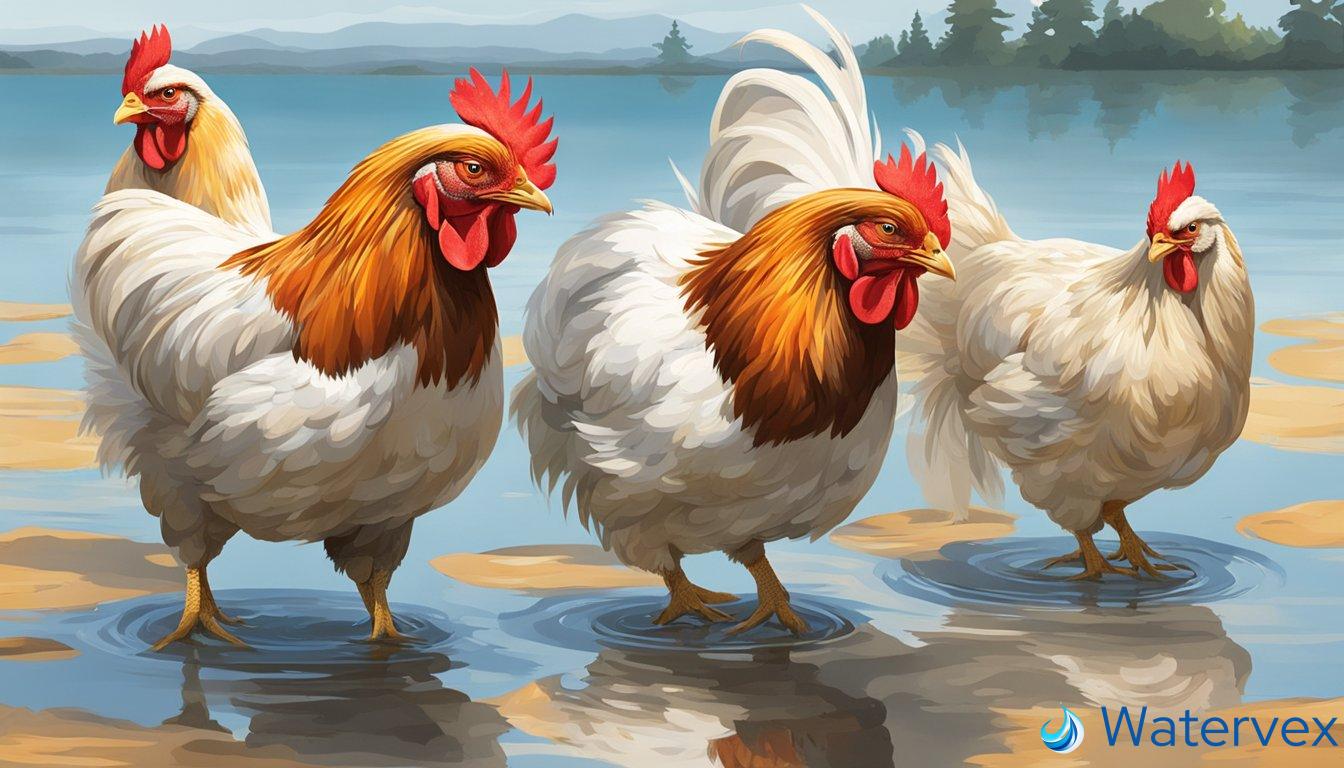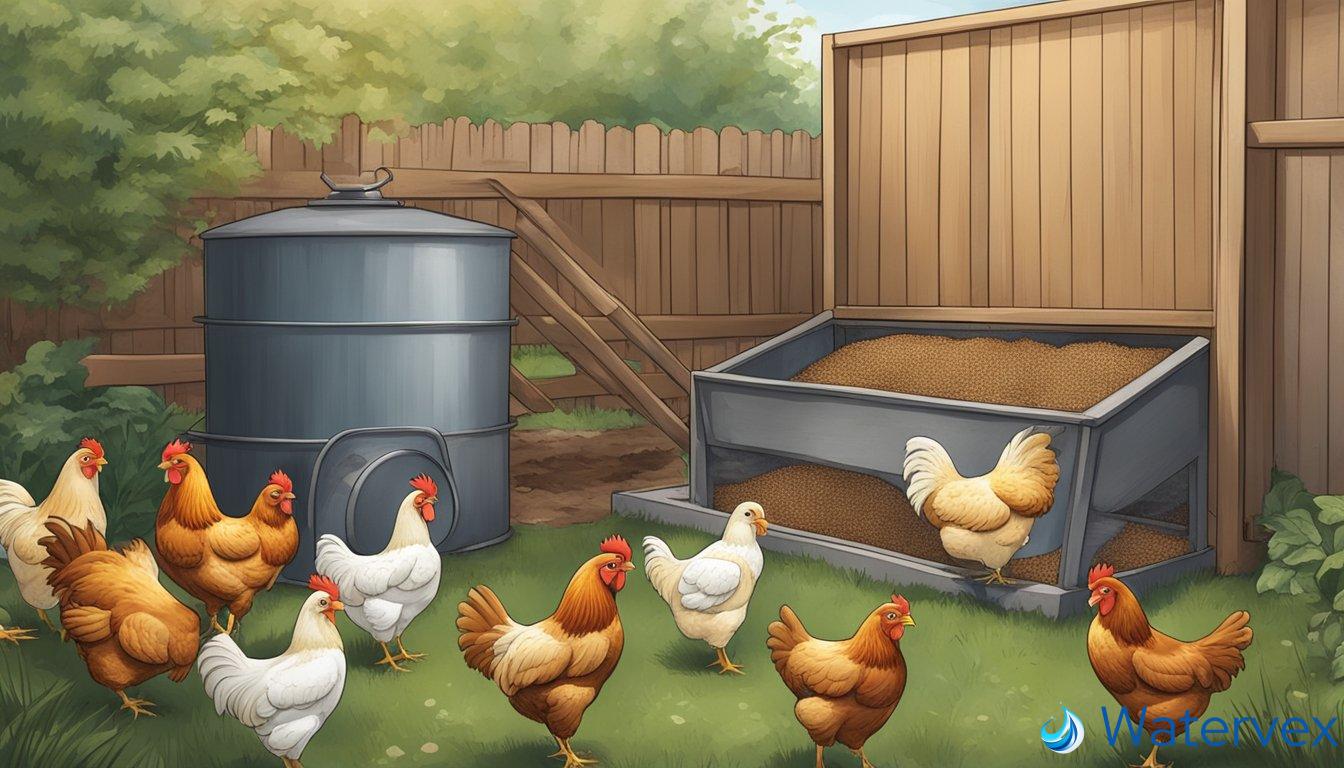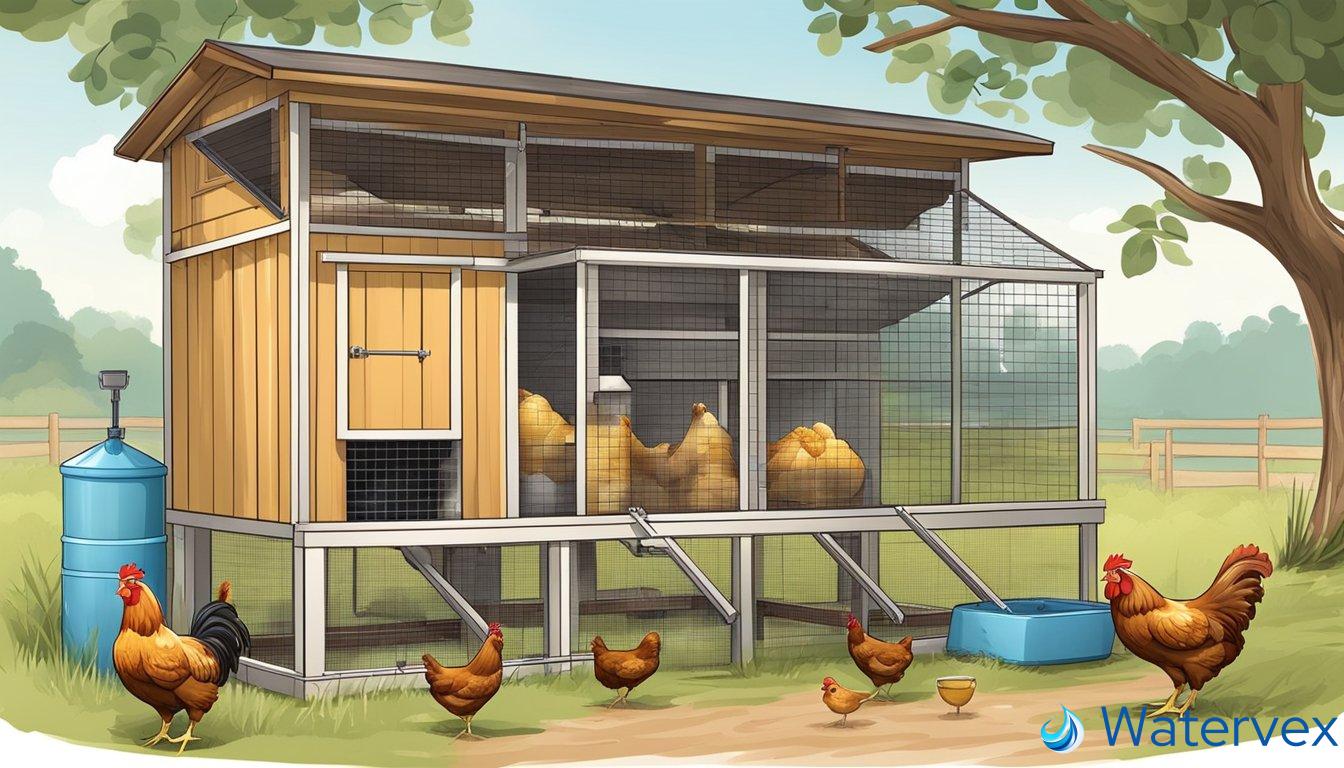Water belly, or ascites, is a concerning condition for any chicken keeper. It’s characterized by the accumulation of fluid in the abdomen, mainly affecting chickens rapidly growing or those under stress. Not only is the ailment uncomfortable for your flock, but it can also be a sign of more serious health issues. Recognizing the symptoms early is crucial, as it typically demonstrates a chicken with a swollen abdomen, appearing lethargic or exhibiting a penguin-like stance.

Treatment for water belly in chickens focuses on addressing the underlying causes and managing the symptoms. While drainage of the excess fluid may provide temporary relief, it’s not a standalone cure. A multifaceted approach that includes dietary adjustments, reduced feeding frequency, and possibly the introduction of supplements, often under veterinary guidance, is necessary to manage this condition effectively. Moreover, environmental management plays a role in prevention; maintaining a clean habitat and providing a balanced diet can significantly reduce the risk of ascites in chickens.
Key Takeaways
- Recognizing water belly symptoms promptly can aid in earlier treatment and better outcomes for affected chickens.
- Treatment involves a targeted approach that includes dietary management and symptom relief through fluid drainage.
- Prevention is key and includes environmental maintenance and dietary control to mitigate risk factors.
What Is Water Belly in Chickens?
Water Belly, or ascites syndrome, is a serious health issue affecting chickens, characterized by the accumulation of fluid within the abdominal cavity. This condition can lead to increased pressure on the organs, resulting in poor health or even death.
Understanding Ascites Syndrome
Ascites syndrome in chickens is essentially a form of heart failure. When a chicken’s heart can’t pump blood effectively, it can lead to pulmonary hypertension—a type of high blood pressure that affects the arteries in the lungs and the right side of the heart. In response, the liver often exudes fluid into the abdominal cavity, causing the distinct swelling associated with water belly.
Rapid growth rates and genetics are key contributors to the onset of ascites. Birds raised at high altitudes may experience exaggerated effects due to lower levels of oxygen, which can amplify pulmonary hypertension. Additionally, environmental factors such as poor ventilation can exacerbate the stress on a chicken’s heart and lungs, increasing the risk of ascites.
Identifying Symptoms and Causes
Symptoms of water belly in chickens include a swollen abdomen, labored breathing, a red comb turning blue, lethargy, and reduced activity. Noticing these signs early can be crucial for successful intervention and treatment.
The underlying causes are multifaceted. Rapid growth, especially in broiler chickens, is a significant factor, as it can strain the bird’s heart and liver. Genetic predisposition plays a role as well, with some breeds being more susceptible to the condition. Environmental stressors such as temperature extremes, overcrowding, and poor ventilation also contribute to the development of ascites in chickens.
Addressing the underlying causes is as important as recognizing the symptoms; it’s just two sides of the same coin. Both warrant careful consideration to ensure the health and well-being of your chickens.
How Can You Treat Ascites in Your Backyard Flock?

Ascites in chickens, often referred to as water belly, requires prompt action to manage the condition and maintain the quality of life for your birds.
Diagnosing and Draining Excess Fluid
If your chicken exhibits signs such as fluid build-up or gurgling sounds from the abdomen, it’s crucial to diagnose properly with the assistance of a veterinarian. Diagnosis may be confirmed through physical examination and potentially other diagnostic tools. Once ascites is confirmed, the immediate treatment often involves draining the excess fluid. This procedure, typically performed by a professional, involves using a syringe to remove fluid and relieve pressure.
Medical and Nutritional Management
Beyond draining the fluid, a multifaceted approach to medical and nutritional management is essential. Heart issues causing poor blood circulation or organ failure need to be addressed possibly with medication as recommended by your vet. Nutrition-wise, adjusting your chicken’s diet to limit high-energy inputs and integrating supplements such as vitamin C can support cardiovascular health. Monitoring and optimizing nutrition, alongside veterinary care, can potentially reduce recurrence and enhance the overall welfare of the flock.
Are There Preventative Measures for Water Belly in Home-Raised Chickens?

You can significantly reduce the risk of Water Belly, or Pulmonary Hypertension Syndrome, in your backyard flock with careful attention to their living conditions and diet. The focus on environmental control and health monitoring is essential to keep your chickens thriving.
Environmental Control and Diet Adjustments
Creating a clean environment with proper ventilation is crucial to prevent Water Belly in chickens. Ensure that coop temperatures remain steady, avoiding extreme heat or cold that can contribute to stress in your flock. Oxygen levels must be sufficient to prevent respiratory issues leading to disease, so review your ventilation system to ensure it is adequate.
Nutrition plays a critical role, too. Balance their diet with the right feed that’s not overly high in energy, as obesity is a known risk factor. Adjust feed quantity and quality, if necessary, to prevent excessive weight gain which could lead to Water Belly.
Monitoring and Improving Chicken Health
Consistently observe your chickens for early symptoms of Water Belly; changes in the comb or wattles may suggest circulatory problems. Regular health monitoring helps you spot issues before they escalate. This includes checking for abnormal behaviors, signs of distress, or a decline in egg production.
An understanding of the subtle indicators of a bird’s health, like observing their activity levels and the color of their comb and wattles, can prevent diseases like Water Belly. For instance, a very red comb might indicate overheated chickens, while a pale comb could signal anemia or poor circulation.
Maintain regular health checks and address any signs of stress or disease promptly to keep your chickens at optimal health.

